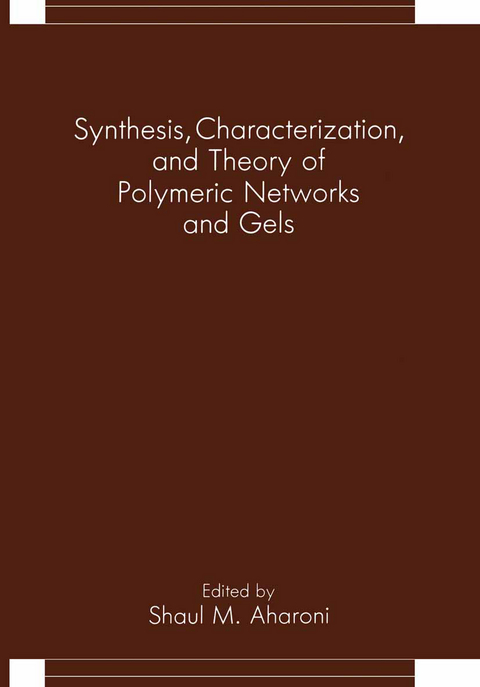
Synthesis, Characterization, and Theory of Polymeric Networks and Gels
Kluwer Academic/Plenum Publishers (Verlag)
978-0-306-44306-0 (ISBN)
Fractal Aspects of Polymer Networks and Gels.- Fractal Properties of Branched Polymers.- Novel Network Structures: Fractal-Rigid-Flexible Networks.- The Fractal Nature of One-Step Rigid Networks and Their Gels.- Static and Dynamic Light Scattering From Solutions and Gels of RF Particles.- Suppression of Fluctuation-Dominated Kinetics by Mixing.- Rigid and Semiflexible Networks and Gels.- Phase Transitions in Liquid Crystal Polymers.- One-Step and Two-Step Rigid Polyamide Networks and Gels:Similarities and Differences.- New Insights Into Aromatic Polyamide Networks From Molecular Modeling.- Networks With Semi-Flexible Chains.- Mesophase Polysiloxane Networks: Mechanical and Thermomechanical Behavior.- Oriented Liquid Crystalline Network Polymers.- Crosslink Products, Mechanism, and Network Structure of Benzocyclobutene Terminated Bisphenol A Polycarbonates.- Rigid Hypercrosslinked Polystyrene Networks With Unexpected Mobility.- Networks and Gels in Force Fields.- Molecular Modeling of the Mechanical Properties of Crosslinked Networks.- Atomistic Nature of Stress in Polymer Networks.- Investigation of Gelation Processes and Gel Structures by Means of Mechanical Property Measurements.- Theory of Strain-Induced Crystallization in Real Elastomeric Networks.- Kinetics of Gelation Monitored Through Dynamics.- Light Scattering Studies of the Structure of Rigid Polyamide Gels.- Influence of Cure Systems on Dielectric and Viscoelastic Relaxations in Crosslinked Chlorobutyl Rubber.- Flexible Networks and Gels.- Network Formation Theories and Their Application to Systems of Industrial Importance.- Osmotic Properties of Swollen Polymer Networks.- Cyclization During Crosslinking Free-Radical Polymerizations.- Novel Polyfunctional Isocyanates for the Synthesis of Model Networks.- Comparison Between Lightly Crosslinked Ionomeric Materials and Highly Crosslinked Materials Derived From Poly (acrylic acid) With Organostannanes as the Crosslinking Agent.- Contributors.
| Erscheint lt. Verlag | 31.12.1992 |
|---|---|
| Zusatzinfo | IX, 360 p. |
| Verlagsort | New York |
| Sprache | englisch |
| Maße | 178 x 254 mm |
| Themenwelt | Naturwissenschaften ► Chemie ► Anorganische Chemie |
| Naturwissenschaften ► Chemie ► Physikalische Chemie | |
| Technik | |
| ISBN-10 | 0-306-44306-6 / 0306443066 |
| ISBN-13 | 978-0-306-44306-0 / 9780306443060 |
| Zustand | Neuware |
| Haben Sie eine Frage zum Produkt? |
aus dem Bereich


